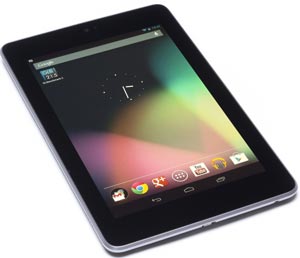 Ever since Google launched its $199 Nexus 7 last year, tablet makers have been looking for ways to come up with even cheaper devices to undercut Google and other brands who targeted the sub-$200 space. Smaller form factors were popularised by Apple’s iPad mini, too. As a result the tablet underwent a massive transformation over the last 12 to 15 months in what can only be described as a race to the bottom. However, we’re not at the bottom just yet.
Ever since Google launched its $199 Nexus 7 last year, tablet makers have been looking for ways to come up with even cheaper devices to undercut Google and other brands who targeted the sub-$200 space. Smaller form factors were popularised by Apple’s iPad mini, too. As a result the tablet underwent a massive transformation over the last 12 to 15 months in what can only be described as a race to the bottom. However, we’re not at the bottom just yet.
Big brands have started rolling out cheaper devices, first hitting the $149 mark and now going towards $99. The white-box gang is already there and cheap tablets are slowly making their presence felt. According to Bloomberg, sales of sub-$149 tablets will account for almost 35 percent of the US market next year, up from 25 percent in 2011.
However, cheap tablets have evolved. The average $199 or $149 tablet two years ago was absolutely horrible, but this is no longer the case. Here are a few examples proving that cheap tablets have come a long way.
The cheap white-box tablet, anno 2011, usually shipped with 512MB of memory, single-core A8 processor and low-res 1024×600 or 1024×768 TN panel. Some even featured outdated resistive touchscreens. However, 1GB of RAM is now the bare minimum, while many cheap tablets already pack 2GB. Practically all cheap tablets now sport IPS panels and it’s even possible to get a WUXGA (2048×1536) tablet for as little as $200, or ~€160 in Euroland. Dual-core A9 or quad-core A7 processors are standard, but there are even some A9 quads available for that sort of money.
Components are getting ridiculously cheap, allowing vendors to add more for less. This is especially true of processors and displays.
Several companies are churning out cheap ARM SoCs and it is estimated that Rockchip can sell a SoC for as little as $5. MediaTek is currently shipping one in five SoCs on the planet and most of them are cheap, A7-based parts. Prices of relatively high-quality IPS displays have tumbled as well and many cost less than $10. Prices or RAM and NAND have gone down as well, but the drop wasn’t as drastic. All in all, Bloomberg reckons the cost of components used in today’s cheap and cheerful tablets is $60, down from $175 in 2011.
It should be noted that cheap tablets, or the companies behind them, don’t get nearly as much press as they should. After all, cheap tablets will make up a third of all tablet shipments next year, but tech sites are focusing on clickbait, pricey high-end models churned out by brands who tend to advertise on the same sites.
It’s all somewhat reminiscent of the vanilla PC boom in the mid eighties, although we don’t believe cheap tablets can replicate the success of cheap PCs three decades ago.






